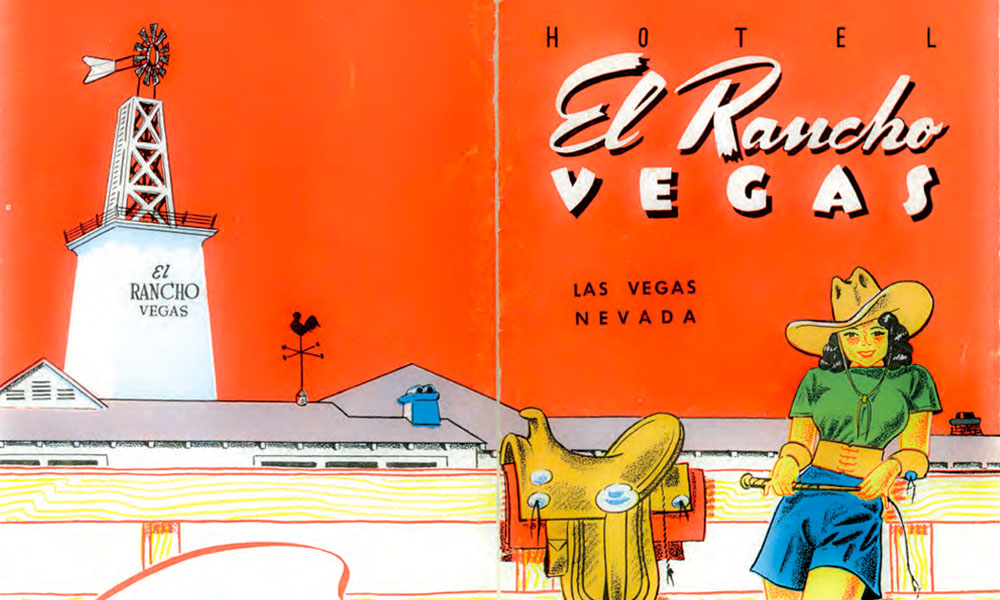El Rancho Vegas
Ironically, a man who had never gambled before had unintentionally built the Strip’s first casino complex, and set the model for future developments: a self-contained and luxurious resort along a highway — where no one worried about using the right fork.

Capital Thinking • Issue #731 • View online
The Las Vegas Strip was born on April 3, 1941, when Thomas Hull, a California hotel operator, opened El Rancho.
It was the first casino complex on Highway 91, the dusty little potholed road stretching through the Mojave Desert, connecting Los Angeles to Las Vegas.
Locals were beyond surprise.
Two observers wrote later, “Two miles out! Middle of a desert! To promoters and builders in Vegas proper, the idea was insane.”
The Air-Conditioned Cowboy: A History of El Rancho Vegas
Stefan Al | The MIT Press Reader:
Even the lady who sold Hull the land was astonished. Legend has it that she offered it for free, since she thought it was “worthless.”
Nevertheless, Hull wrote a $57,000 check for 57 acres. A bargain, he thought, much cheaper than downtown, and outside city taxation limits.
Would this be another of Hull’s failed business ventures?
In 1913, he had first tried his luck with mining in Mexico, but in the midst of the Mexican Revolution he ran into Pancho Villa’s army and had to walk 600 miles to get back to the border. He operated a movie theater, then a state-of-the-art industry, but it flopped.
Hull finally hit the jackpot in the hotel business.
He had traded on his flying past when marketing San Francisco’s Bellevue as a place for aviation heroes. Its success helped him to develop a luxury version of the motel, a new invention that rendered obsolete auto camps, which provided small cabins and public toilets to drivers.
In 1925, the first “Mo-Tel,” a portmanteau of “motor” and “hotel,” gave drivers more hotel-like privacy and facilities all under a single roof, including a grocery market, a restaurant, and a private bathroom in each room.
Hull called his version the “El Rancho,” built a few in California, and planned to build one in Las Vegas.
Hull read in a highway engineering survey that almost one million cars traveled on the Los Angeles highway between Nevada and Southern California every year.
Since his motels relied on passing automobilists, not downtown pedestrians, the highway location was perfect, despite being in the middle of the desert.
In fact, Hull had had his eyes on Las Vegas ever since he had explored it three years earlier as a resort destination with his architect, Wayne McAllister.
He was commissioned to design “the Caliente of Nevada,” a smaller version of Tijuana’s Agua Caliente, the spectacular casino-resort that Mexico’s President Cárdenas had turned into a state-run school after outlawing gambling. But investors refused to take the risk.
Now backed by a private loan from Texas, Hull resuscitated the idea.
But Hull, who was not a gambler, initially planned to build a motel only, just like the other El Ranchos, without a casino. During construction, his local friends said: “Why don’t you build a casino building?”
The adding of the casino to the resort was an afterthought, merely a geographic add-on to a motel that happened to be built in Las Vegas.
McAllister also deviated from the El Rancho template elsewhere. While it was a luxury motel, it could not be perceived as too fancy, which would have turned off local patronage, accustomed to Western-themed places.
An observer wrote of Las Vegas:
“The mood is … ‘Western,’ lower middle class, proletarian even … people are … quite without pretension … their shirts open at the throat. … Old clothes and battered hats are common.”
Therefore, McAllister designed the interior in the local “Western” style.
He hung wagon wheel chandeliers from the ceilings. He draped cowhide curtains from poles with cattle horns. In the lobby, he built a two-story stone chimney, a fake fireplace, mounting deer heads.
“El Rancho Vegas is the physical expression of the warm hospitality that has been the tradition of our great Southwest since the days of the covered wagon,”
the publicity brochure stated. “Dress is informal. Bring your westerns.”
But the Western theme also led to some glaring contradictions. The nostalgic décor clashed with the ultramodern facilities of what was billed as “a truly modern hotel.”

*Featured post photo credit: Juliana Malta on Unsplash
